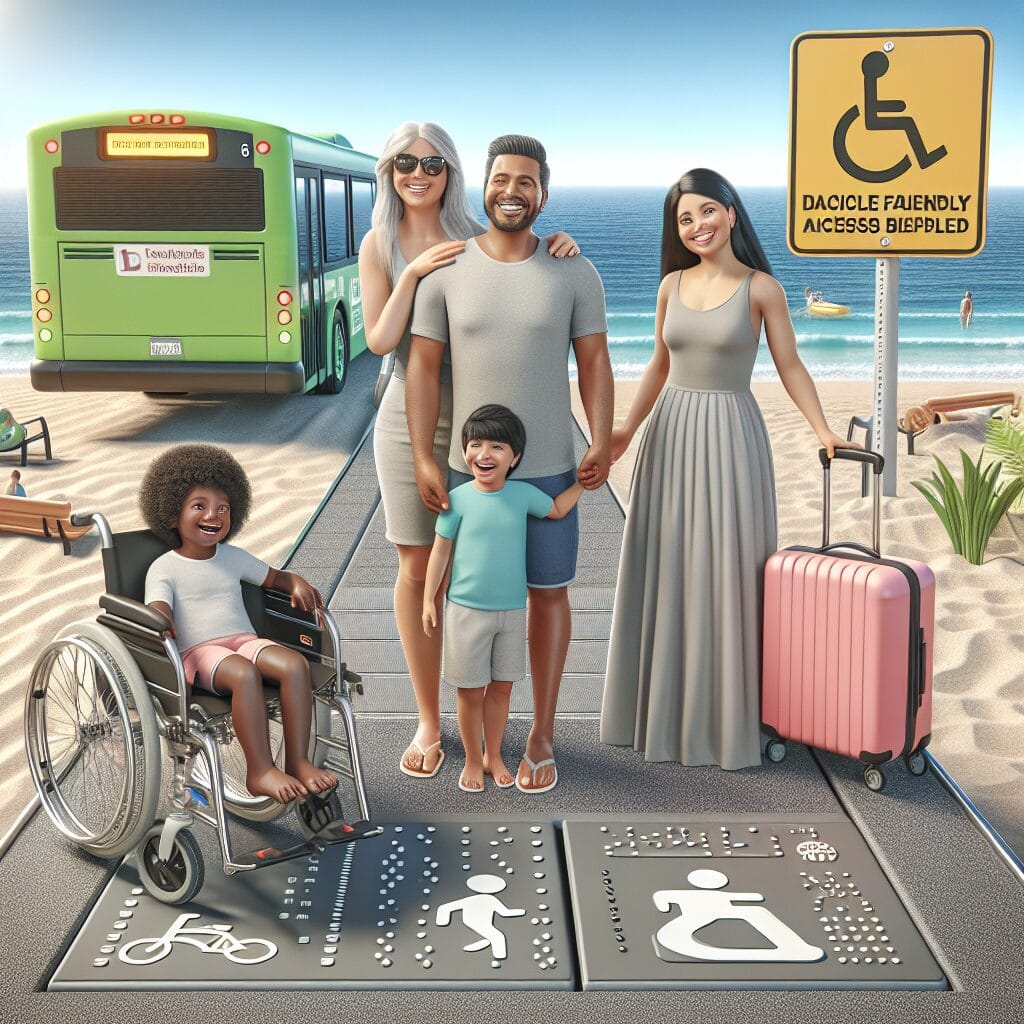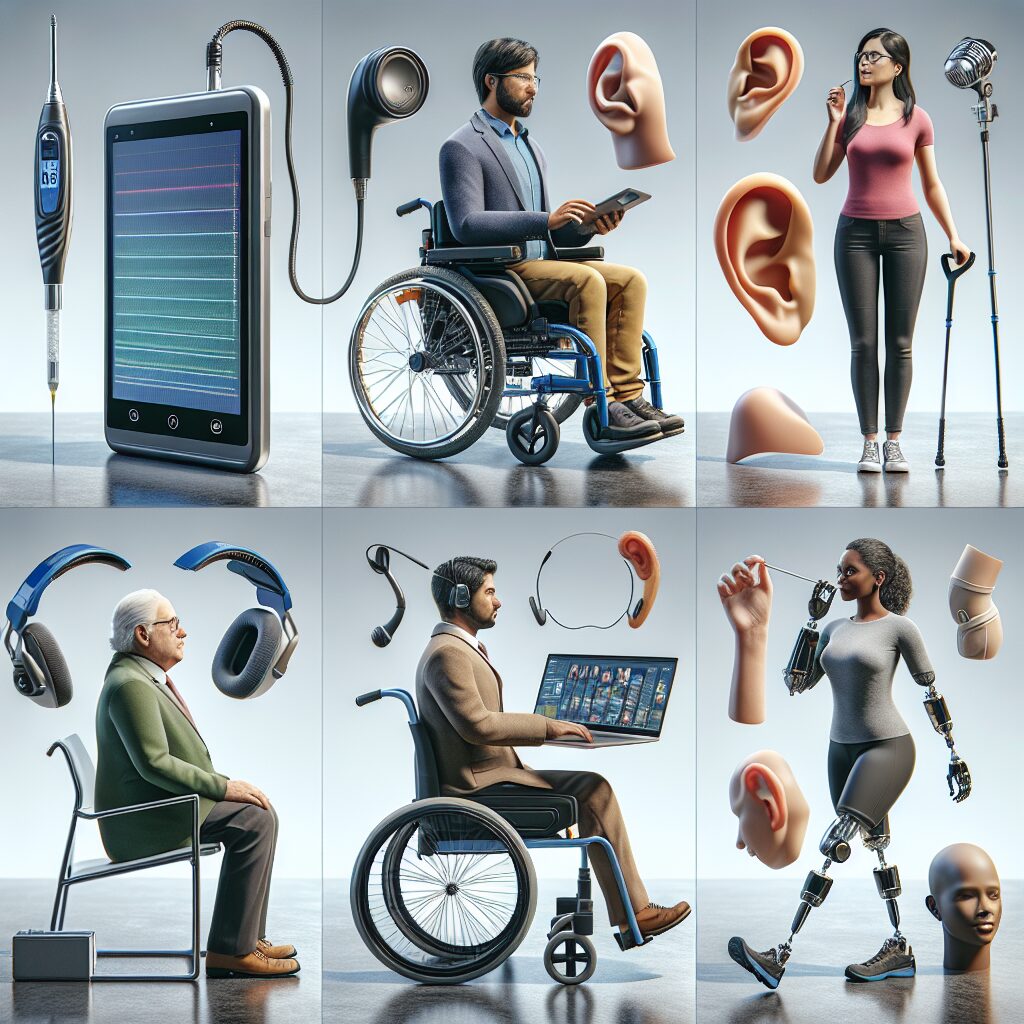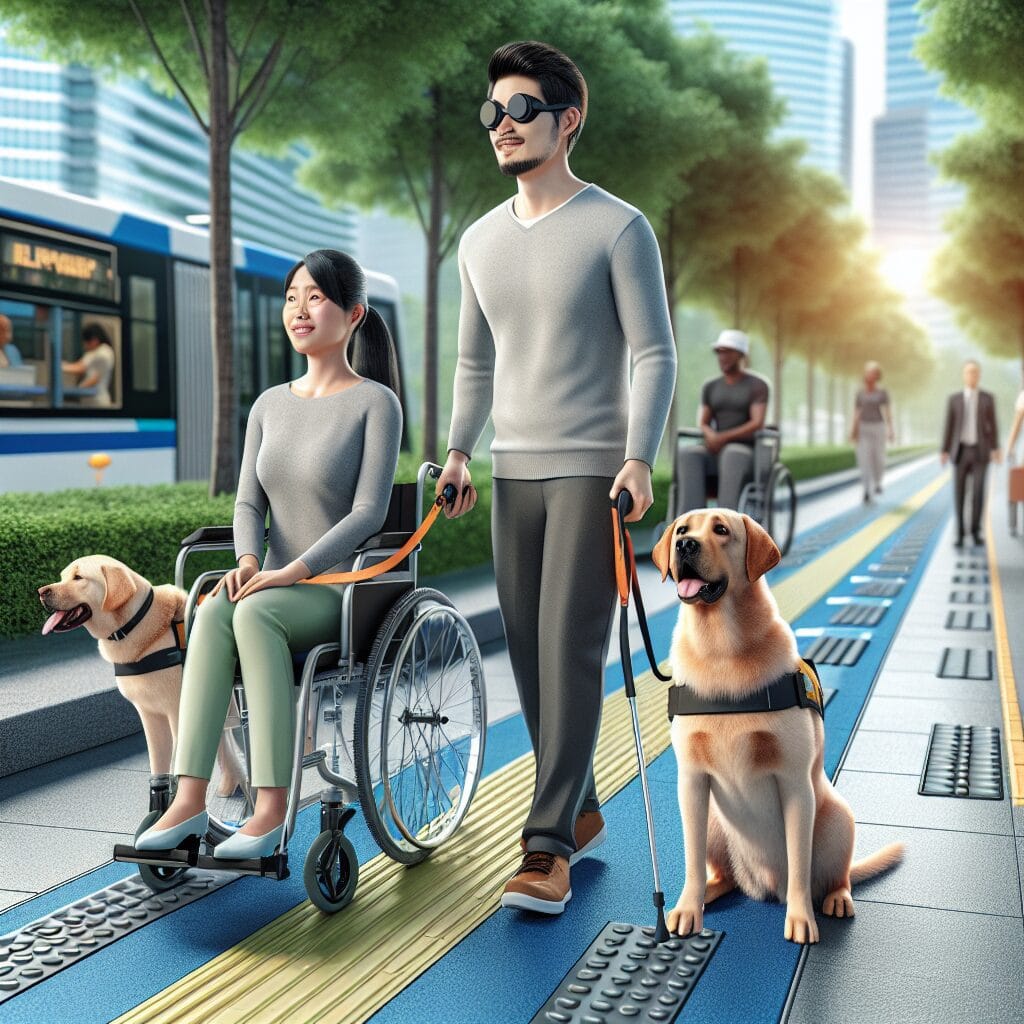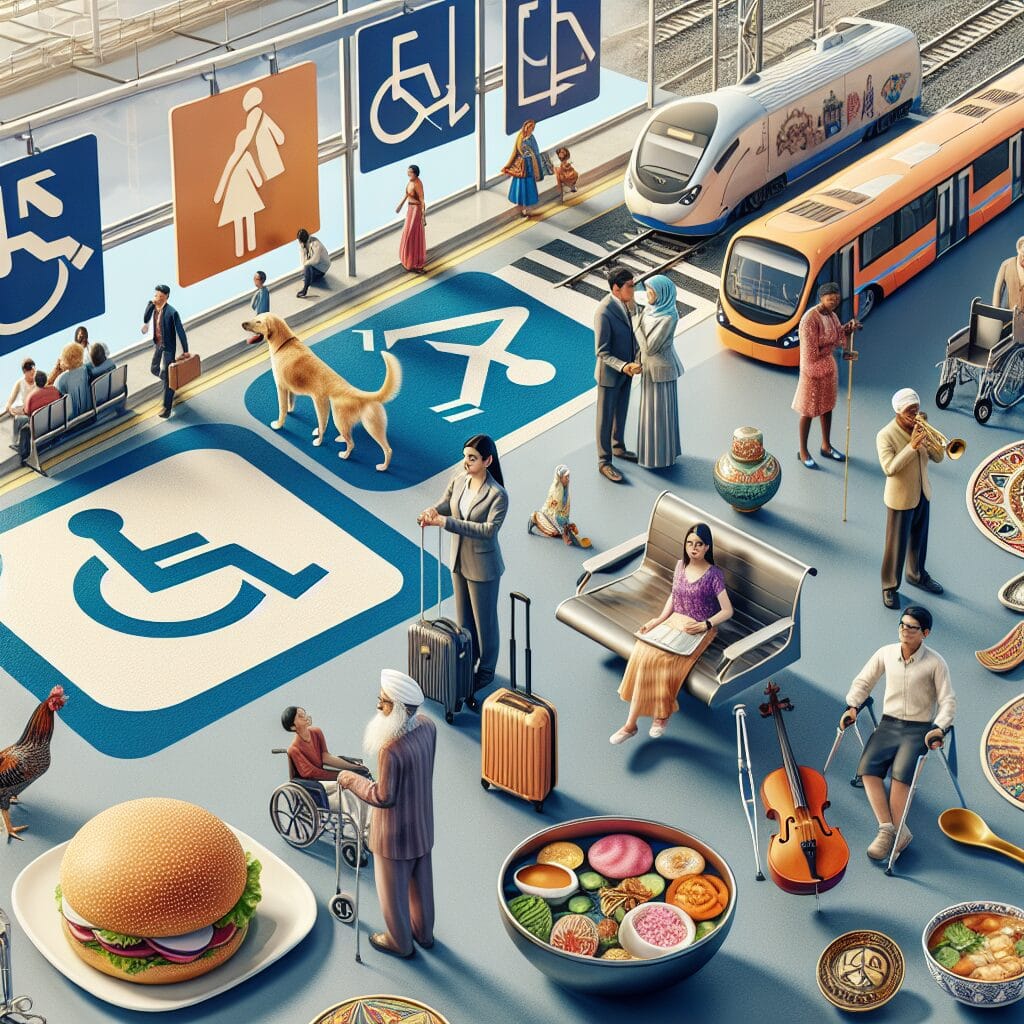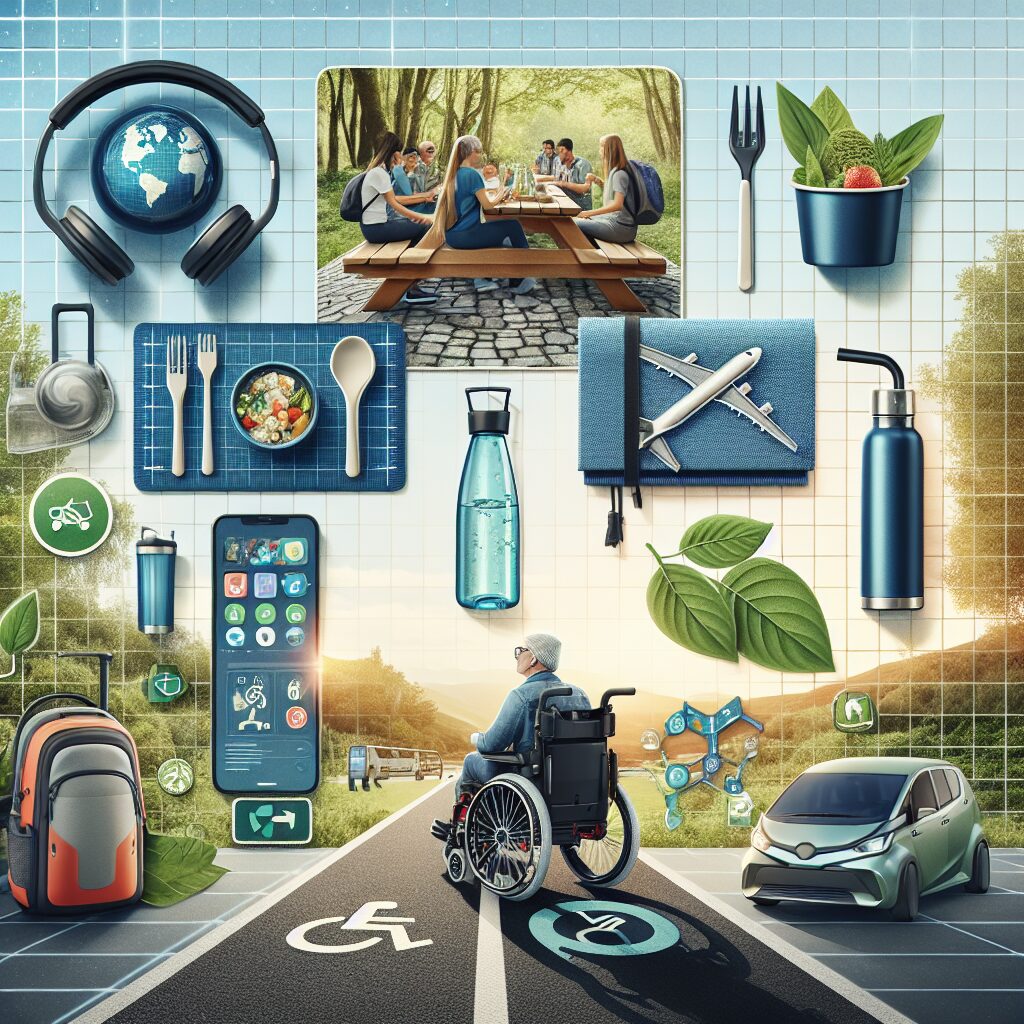Family-Friendly Accessible Travel refers to the concept of planning and organizing trips that are suitable for families with members who have disabilities or special needs. It involves creating an inclusive and supportive environment that allows everyone to enjoy and participate in the travel experience.
Traveling can be a challenge for families with disabilities, as they often face barriers and limitations in accessing various attractions and services. However, thanks to the growing awareness and efforts towards inclusivity, family-friendly accessible travel has gained significant attention and importance. With the aim of creating a more inclusive society, many destinations and travel companies are now focusing on providing accessible facilities and services that cater to the diverse needs of families. This allows families with disabilities to explore new places, engage in various activities, and create lasting memories together.
In the upcoming sections, we will delve deeper into the key takeaways of family-friendly accessible travel. We will discuss the importance of pre-trip planning, the significance of finding accessible accommodations, and the benefits of engaging in inclusive activities. Additionally, we will explore the role of technology in enhancing the travel experience for families, as well as the impact of accessible travel on the overall well-being of both individuals with disabilities and their loved ones. Stay tuned to uncover valuable insights and practical tips to make your family trips more enjoyable and inclusive.
Key Takeaways
1. Family-friendly accessible travel is becoming increasingly important, as many families with disabled or special needs members seek opportunities to explore and enjoy new destinations together.
2. To ensure a successful trip, families should carefully research and select accessible destinations that offer inclusive experiences and accommodations, such as wheelchair-friendly attractions, accessible transportation, and family-friendly amenities.
3. Planning ahead is crucial for a family-friendly accessible trip, as it allows families to arrange necessary accommodations, equipment rentals, and assistance services well in advance. It is also advisable to request accessible rooms or cabins, accessible dining options, and insurance coverage for unexpected emergencies.
4. Traveling with a special needs child or family member requires thoughtful consideration of their specific needs. Parents should consult healthcare professionals, pack essential medical supplies, and communicate with airlines or travel providers about any necessary accommodations or assistance required during the journey.
5. In order for family-friendly accessible travel to truly flourish, it is essential for destinations, travel companies, and the tourism industry as a whole to prioritize and invest in accessibility initiatives. By doing so, they can create more inclusive travel experiences that cater to the diverse needs of all families.
What are some tips for planning a family-friendly accessible travel?
Choosing the Right Destination
When it comes to family-friendly accessible travel, selecting the right destination is crucial. Look for places that offer a variety of accessible activities and attractions suitable for all ages. Consider the accessibility of transportation, accommodation, and public facilities in the location. Research popular family-friendly destinations known for their accessibility and inclusive amenities.
Accessible Accommodation Options
It’s essential to ensure that the chosen accommodation is equipped with necessary accessibility features. Look for hotels or vacation rentals that offer accessible rooms with amenities like grab bars, roll-in showers, and adjustable beds. Inquire about accessible entrances, elevators, and ramps to make the stay comfortable for everyone. Choose an accommodation that is conveniently located close to accessible dining options, transportation, and attractions.
Transportation and Getting Around
Consider the accessibility of transportation options both to and within the chosen destination. Look for airlines that offer assistance and accommodations for travelers with disabilities. Research accessible transportation services available at the destination, such as wheelchair-accessible taxis or buses. Additionally, explore the feasibility of renting an accessible vehicle if needed. Familiarize yourself with accessible routes, sidewalks, and attractions to ensure a smooth travel experience.
Accessible Activities and Attractions
One of the key aspects of family-friendly accessible travel is finding activities and attractions suitable for all family members. Look for accessible museums, parks, zoos, and amusement parks that offer accommodations for individuals with disabilities. Check if they have wheelchair rentals, accessible restrooms, and accessible entrances and exits. Plan your itinerary in advance, considering the needs and interests of every family member.
Accessible Dining Options
Food is an integral part of any travel experience. Make sure to scout for accessible dining options in the destination. Look for restaurants that have accessible entrances, spacious seating areas for wheelchair users, and menus available in various formats, such as braille or large print. It’s also recommended to inform the restaurants in advance about any specific dietary requirements or allergies to ensure a smooth dining experience for the whole family.
Ensuring Safety and Comfort
When traveling with family, safety and comfort should be top priorities. Make sure to pack necessary medications, medical equipment, and accessibility aids for all family members. Research accessible medical facilities or hospitals in the destination, just in case. Carry relevant documents like medical records and doctor’s contact information. Furthermore, ensure that everyone has appropriate clothing and accessories based on the weather and specific accessibility needs.
Top 5 Tips for a Stress-free Family-Friendly Accessible Travel
- Plan and book in advance to secure accessible accommodations and transportation options.
- Research and map out accessible activities and attractions suitable for everyone.
- Communicate any specific accessibility requirements or dietary restrictions to restaurants and attractions in advance.
- Pack essential accessibility aids, medications, and relevant documents for the entire family.
- Keep emergency contact information readily available and be prepared for any unexpected situations.
Frequently Asked Questions
1. What is family-friendly accessible travel?
Family-friendly accessible travel refers to the concept of planning and undertaking trips that cater to the needs of both children and individuals with disabilities. It involves ensuring that accommodations, transportation, and attractions are accessible and suitable for families with diverse needs.
2. Why is family-friendly accessible travel important?
Family-friendly accessible travel is crucial because it allows families with individuals who have disabilities to explore and enjoy new destinations together. By ensuring accessibility, these families can create lasting memories and have enriching experiences without barriers or limitations.
3. How can I find family-friendly accessible destinations?
There are several ways to find family-friendly accessible destinations. You can start by researching travel websites that specialize in accessible travel or searching for travel blogs and forums where families share their experiences. Additionally, reaching out to travel agents who have expertise in accessible travel can provide valuable insights and recommendations.
4. What should I consider when choosing family-friendly accommodations?
When selecting family-friendly accommodations, it’s essential to consider accessibility features such as wheelchair ramps, elevators, wide doorways, and accessible bathrooms. Additionally, look for amenities like family rooms or suites, childproofing options, and proximity to attractions suitable for all family members.
5. How can I make transportation more accessible for my family?
To make transportation more accessible for your family, consider using travel companies that offer accessible vehicles or have partnerships with accessible transportation providers. You can also contact airlines, train companies, or bus operators in advance to arrange any necessary accommodations, such as wheelchair assistance or seating arrangements.
6. Are there specific attractions or activities suitable for families with disabilities?
Yes, many attractions and activities cater to families with disabilities. These may include museums with accessible exhibits, theme parks with inclusive rides, nature parks with wheelchair-friendly trails, or beaches with accessible facilities. Researching and planning specific attractions in advance can help ensure a enjoyable experience for everyone in your family.
7. What resources or tools can I use to assist with family-friendly accessible travel?
There are various resources and tools available to assist you with family-friendly accessible travel. Websites and mobile apps provide information on accessible destinations, accommodations, and reviews from other travelers. Additionally, accessibility guides, maps, and travel agents who specialize in accessible travel can offer valuable support and guidance.
8. How can I involve my children in planning family-friendly accessible travel?
Involving your children in planning family-friendly accessible travel can help them feel empowered and create anticipation for the trip. Allow them to choose attractions or activities they are interested in or let them provide input on accommodation options. Engaging their excitement and involving them in decision-making can make the experience more enjoyable for the whole family.
9. Are there any financial considerations related to family-friendly accessible travel?
Family-friendly accessible travel may involve additional expenses, such as the cost of accessible accommodations or specialized transportation. However, it’s essential to remember that many destinations and attractions offer discounts or priority access for individuals with disabilities. Researching and planning ahead can help you find cost-effective options without compromising on accessibility.
10. Is it possible to combine family-friendly accessible travel with other tourists?
Absolutely! Family-friendly accessible travel can be combined with traditional tourism experiences. Many destinations and attractions have implemented accessibility features, making it possible for families with diverse needs to explore alongside other tourists. By doing research and planning in advance, you can ensure a balanced travel experience that caters to your family’s accessibility requirements while enjoying popular tourist spots.
Final Thoughts
Family-friendly accessible travel holds immense value in creating inclusive and memorable experiences for all family members. By breaking down barriers and providing accessibility options, families with diverse needs can explore the world together, fostering understanding and appreciation for different abilities. It is important for travel providers and destinations to continually strive for accessibility improvements, ensuring that every family has the opportunity to embark on fulfilling and enjoyable travel adventures.
Remember, family-friendly accessible travel is not only about physical accessibility but also about creating welcoming environments and fostering inclusion. By embracing the concept of family-friendly accessible travel, we can help create a world where all families can embark on incredible adventures, making lasting memories and strengthening their bonds.


